QuestionI have never had fish before and I'm not quite sure what to do. I looked online and found a couple of fish that I might want. I have not decided on a tank size I have purchased absolutely nothing, none of these fish are final and I would appreciate it if you could both tell me if the following fish are compatible and also make suggestions for additional fish and how to set up my tank. The fish I currently have in mind are:
Silver Tip Tetras
Cherry Barbs
Neon Tetra
African Dwarf Frog
Swordtails
Upside down Catfish
Female Bettas
Mickey Mouse Platies
Again, these are just thoughts, and I would REALLY appreciate it if you could give me some tips and pointers on how to put together my aquarium from the substrate to the fish going into it. Thanks!
AnswerHi Rachel,
Welcome to the hobby!!
Really you can start with almost any tank size as long as you know what you are doing and have researched well on fish care. But in general, I would recommend a minimum 10-gallon. Better yet though -- a 20-29 gallon tank provides enough room to have a decent setup of fish without it being too large. Smaller tanks are harder to maintain than larger ones due to the tendency for people to put too many fish in a small tank and not maintain it like they should. Pollution builds up very fast and the fish become ill in no time.
All the fish you mentioned by the way are compatible. If you start with a 10-gallon I would recommend you keep about 6-8 fish. A 20-29 gallon could likely hold perhaps a couple of small catfish, a group of 6 tetras, and a few other individual fish. Its very important to not stock your aquarium too soon. There is a process all new aquariums must go through called "cycling" or "establishing a biofilter" a biofilter is two types of good bacteria that develop in fish tanks and control the dangerous ammonia produced by the fish. First, one type of bacteria develops and converts ammonia over to what's called "Nitrite" then the second type of bacteria develops and converts nitrite into "nitrate" which is harmless.
You can test for all three levels - ammonia, nitrites, and nitrates with simple test kits. They are easy to use and will tell you more about these levels and what the tests mean.
While you can get by without test kits. It is the best reliable way to know if your tank has officially "cycled" which is when the bacteria have developed well enough (they live in the gravel bed and filter and all other surfaces) that ammonia and nitrites remain safely at zero.
~So remember, the "biofilter" is not yet established in a newly setup tank. So if you add a lot of fish, ammonia will build up tremendously and the fish can poison themselves. The bacteria take at least 4-6 weeks to develop and to get them going - they need the food source (ammonia).
~The key is to start with just 2-3 small hardy fish like platies or cherry barbs. Leave those fish in there for 2 several weeks whilst testing or simply doing 30% water changes every other day if your not testing. And then its best if you get the water tested or do it yourself and note on the ammonia level. It if it ZERO you can add 3-4 more fish and then wait some more. If the ammonia is building up wait on adding any new fish and continue with water changes and such.
This process continues until the tank has cycled and/or the tank is fully stocked.
~*~Cycling is the number one most important thing to know all about when first setting up your aquarium.
AQUARIUM SETUP. STEP 1#
NEEDED SUPPLIES
1.) Aquarium ((of course)) The best tanksize to start with is a 20gallon tank ((larger tanks are fine too))
2.) Appropriate stand--aquariums are far too heavy when filled to be placed on anything other than a specially made aquarium stand.
3.) Filter (Hang on the back type Power filters are the best filter there is and the best one for beginners)
4.) Good-quality Heater (unless keeping goldfish or coolwater species)
5.) Thermometer
6.) Hood and light (florescent bulb lighting is best...doesn't produce as much heat as incandescent and florescent helps live plants grow and shows off fish colors much better)
7.) Water conditioner - stresscoat, Amquel+, Prime, are all good kinds (get a large bottle)
8.) Medium size fish net
9.) Gravel, decor, plants--I've found it best to go natural when decorating your tank. Your aquarium tends to look much better if the gravel is a natural shade, the plants are green and not the neon bright colors they sometimes come in, and the decoration devoid of any submerged ships, "no-fishing" signs, bubbling scuba divers or treasure chests. Driftwood and smooth stones make excellent decor for a natural-looking tank. HOWEVER, you do not have to go natural because fish are mostly captive-raised on huge fish farms so they know nothing of what their real habitat looks like. Feel free to choose blue or green gravel or any of the other colors, just try to avoid the really, really bright colors like orange or red which can make a fishes color look very abnormal (and probably give them a heart-attack) Even white gravel is fine with fish although it can tend to make their colors look washed out, while darker gravels make a fishes colors show up much better. And with decorations, just make sure they are fish-safe. Fish generally won't be bothered if they have to hide inside a sunken ship or a natural stone cave. It's all your choice really.
*You'll also want a background on your tank, choose whichever style you prefer but again, darker and more natural themes are best. Backgrounds help fish feel more secure and less "Out-in-the-open"
10.) Aquarium gravel siphon and 5gal bucket (also have on hand one or two 1-gallon pitchers for filling up your tank--reserved strictly for that purpose only!)
11.) ICH medication (this is really optional, but really excellent to have on hand since ICH is the most common disease beginners face and in fact often the disease -every- beginner has to deal with)
12.) Algae sponge scrubber (very useful for wiping the front glass)
13.) Test kits for ammonia nitrite and nitrate
I believe that is about all that most beginners will need when they setup their first tank to be successful. Its best not to try to setup your tank and leave out a lot of the important stuff to save money. However, I do highly recommend the very popular "tank kits" available at stores such as wal-mart and petstores they can be in sizes of about 20 gallons to 55 gallons. I have had good success with these kits containing all the necessities including a quality heater and filter plus florescent lighting. Generally all you need then is gravel, decor, and the tank stand.
The key to good fishkeeping is to read read read as much as you can about it. Look into some of the wonderful books about fishkeeping such as-
*The simple guide to freshwater aquariums
*101 top aquarium fish
And of course fish magazines and reliable fish care forums like tropicalresources.net
I do hope this helps!!!
Karen~

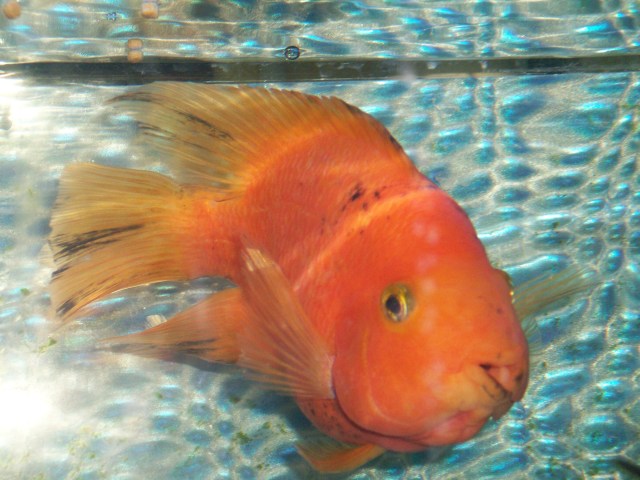 parrot ciclids
QuestionQUESTION: I have a 65 gal tank with 2 orange pa
parrot ciclids
QuestionQUESTION: I have a 65 gal tank with 2 orange pa
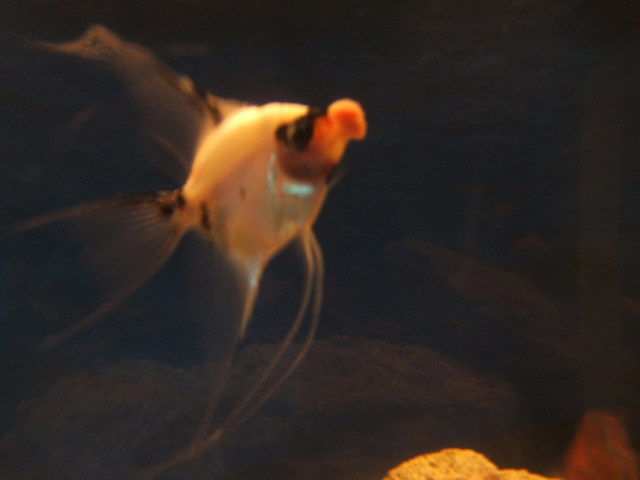 Sick angel fish
Question
Angel fish w/cauliflow
Is there any cure for m
Sick angel fish
Question
Angel fish w/cauliflow
Is there any cure for m
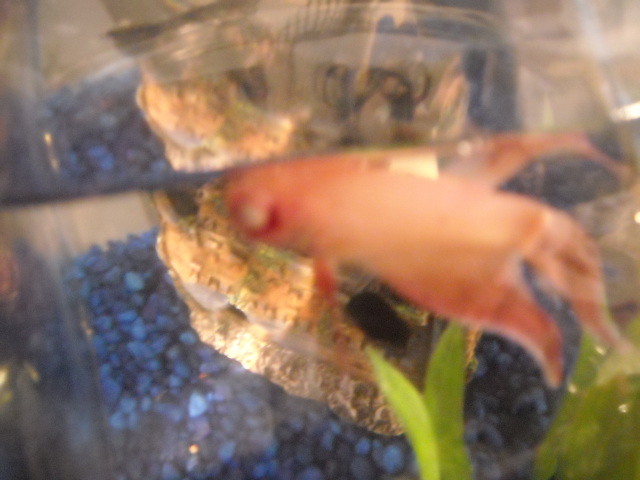 Popeye Betta
Question
popeye
My betta fish started showing si
Popeye Betta
Question
popeye
My betta fish started showing si
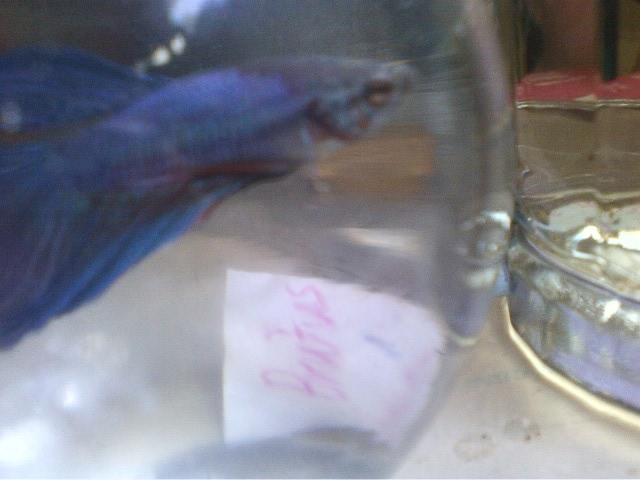 my beta has grey-ish green around his head
Question
beta closeup far off
I have had a
my beta has grey-ish green around his head
Question
beta closeup far off
I have had a
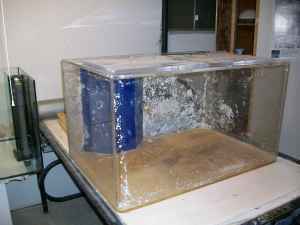 Drilled tank ?
Question
75 gallon acrylic
Hello, and thanks for answer
Drilled tank ?
Question
75 gallon acrylic
Hello, and thanks for answer